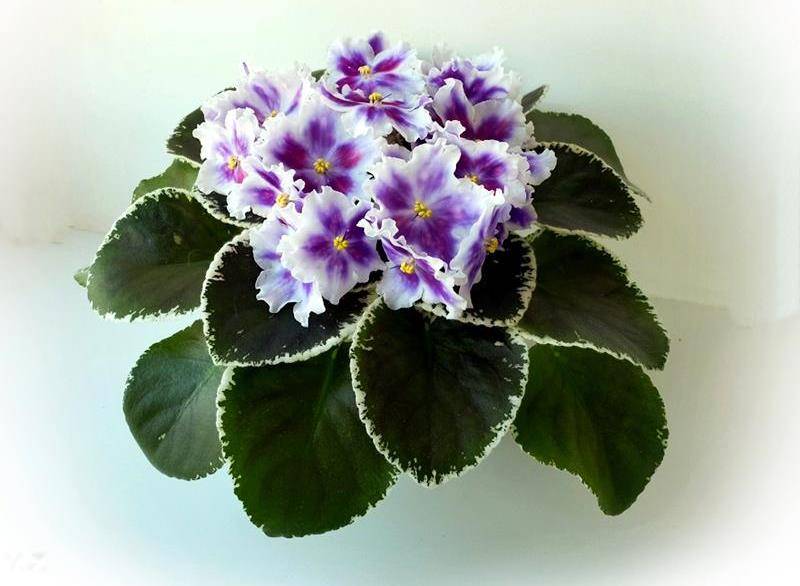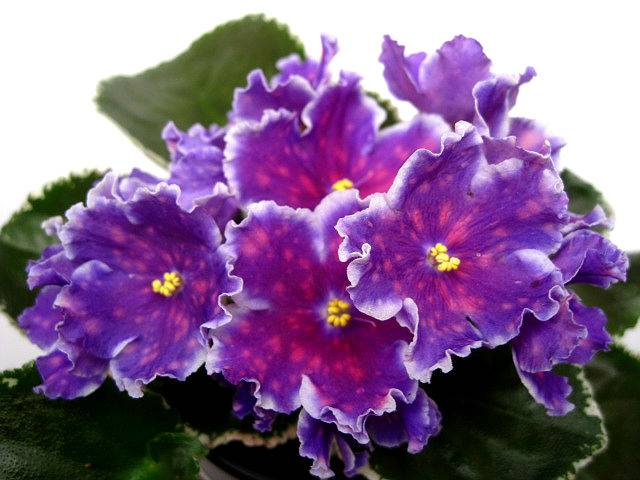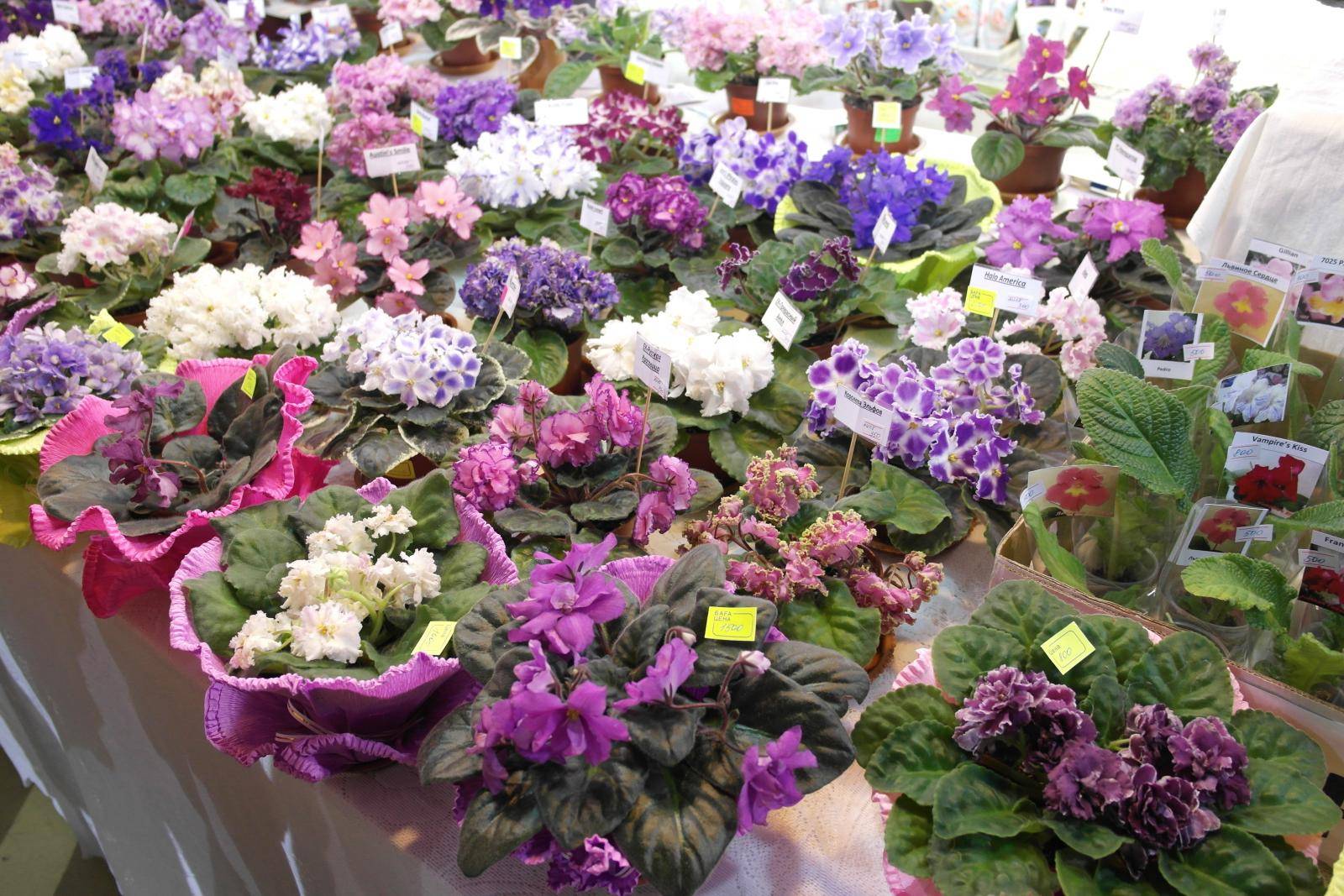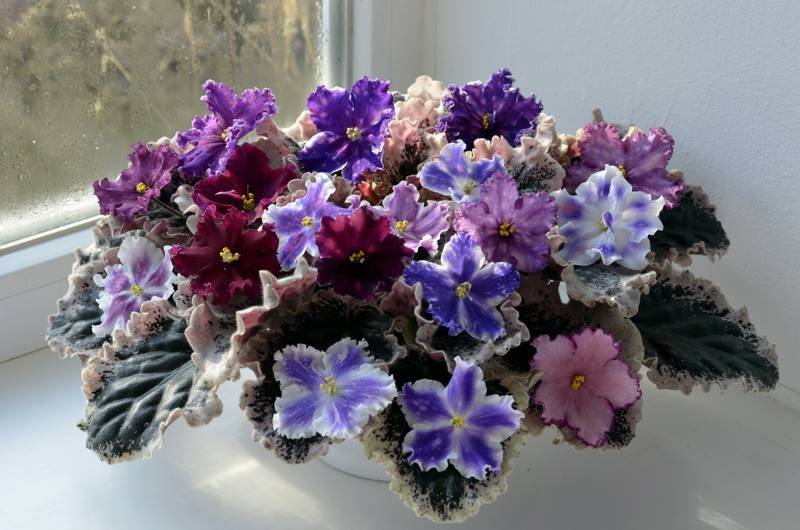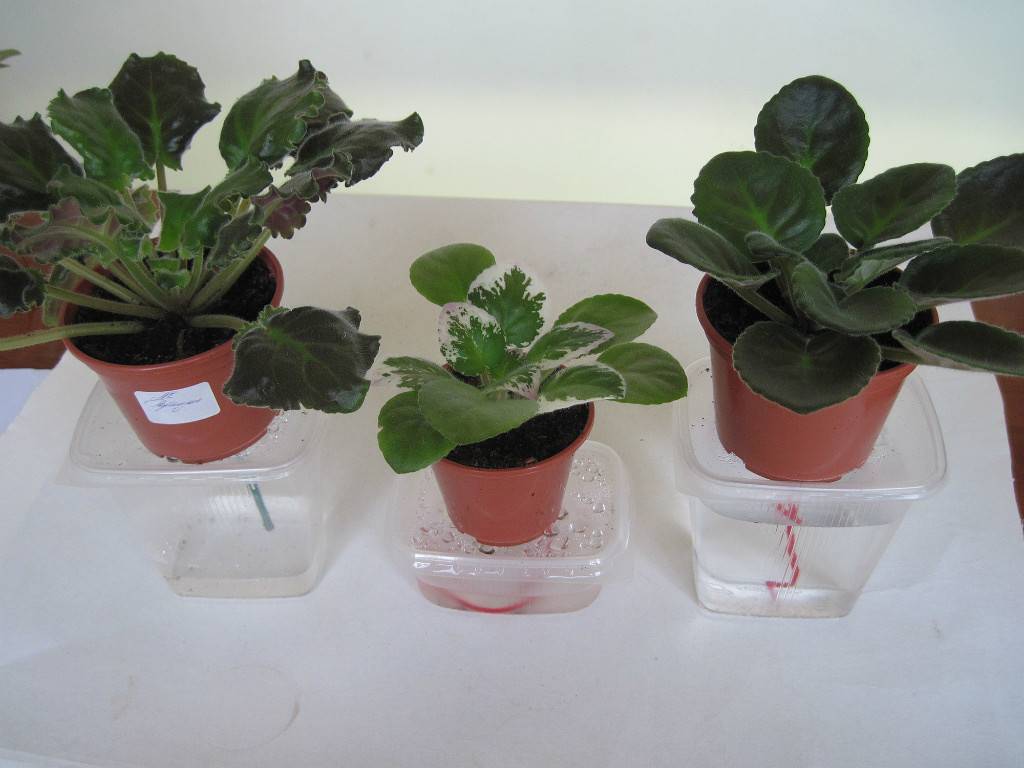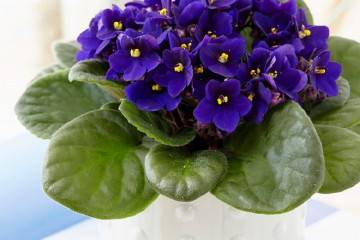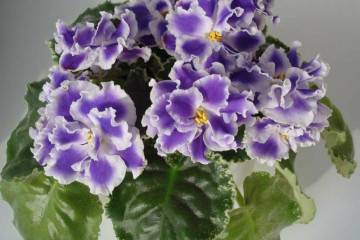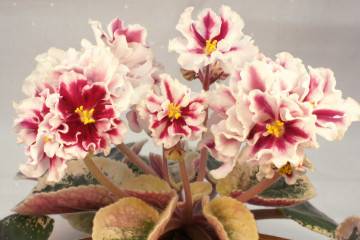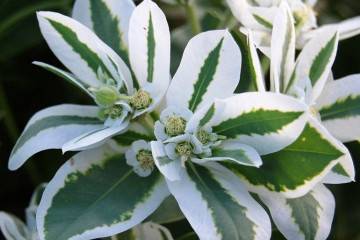Violet Wat King peas - plant features
Content:
- What does a violet Wat King of peas look like?
- Brief biography and achievements of the breeder Valkov Tatyana
- Description and characteristics of varieties of Wat
- Features of caring for a violet king of peas at home
- When and how it blooms
- How Saintpaulia reproduces wat king peas
- Transplant after purchase and during reproduction
- Possible growing problems
Violets grown on window sills and so beloved by flower growers, in fact, have nothing to do with the Violet family. It would be more correct to call them Saintpaulias, but this name did not catch on. Violet VaT Tsar Pea is one of the many hybrid varieties of Saintpaulias, distinguished by original, large flowers and unusual color of leaves.
What does a violet Wat King of peas look like?
Every year more and more new hybrid varieties of violets appear. They are popular due to their unpretentiousness, bright and long flowering period. Violet Wat King Peas is an interesting, unusual and eye-catching indoor culture.
Plant characteristics
Description of the plant:
- The leaves, like other saintpaulias, are collected in a root rosette. At Wat King of the Peas, it is compact and very neat.
- The flowers are white with purple "fingers" on each petal; small pink peas are scattered on the purple part.
- The size of the flowers is large - about 6 cm.
- Long flowering.
- The leaves are large, even, rich green with a creamy edging around the edges.
What family does it belong to
This variety belongs to the genus Saintpaulia (often called the Uzambara violet), which is part of the Gesnerievye family.
Briefly about the history of appearance
Saintpaulias first appeared at the beginning of the 19th century. in Europe. And to date, more than 30 thousand varieties have been bred, differing both in external characteristics and in the nuances of care. Violet exhibitions are held annually, where new hybrids are constantly presented. The VaT Tsar Pea variety was bred relatively recently - in 2015. Like many other varieties of hybrid Saintpaulias, this one was created by the famous Ukrainian breeder Tatyana Valkova.
Brief biography and achievements of the breeder Valkov Tatyana
Tatiana Valkova was born on December 13, 1971 in the Ukrainian city of Shakhtersk. For two decades she has been growing plants, and a few years ago she took up the selection of Saintpaulias. Fame came to her very quickly, since the resulting VaT varieties enjoyed great success.
The war in Ukraine slowed down her work a little. However, despite all the difficulties, moving from city to city, she took with her seeds, leaves, saplings of violets dear to her. Friends who have preserved the planting material also helped. Despite the fact that part of the collection was lost, Tatyana Valkova is a famous breeder, thanks to whose talent a huge number of new hybrid VaT varieties have appeared.
Description and characteristics of varieties of Wat
Tatyana Valkova became famous for her violets not only in her native country, but also in Russia and in many other countries. She regularly participates in exhibitions. The varieties she bred are in incredible demand.
Africa
Violet VaT Africa is distinguished by dark, deep purple petals, strongly corrugated at the edges. The inflorescences are located on a compact rosette of variegated leaves. It is often called the African violet.
Mystic
The leaves are collected in a small neat green rosette. The flowers are large, with a large number of petals of the original color. The main color of the petals is white; patterns of pink and blue colors are randomly located on it, reminiscent of frosty.
Pulsar
The rosette is small, almost invisible under the lush inflorescence. The flowers in it are large white with crimson inserts and patterns of various shapes.
Sun in the palm of your hand
The flowers are terry, fluffy, white. Along the edges of the petals there is a greenish fringed edging that turns pink towards the center of the flower. They are reminiscent of sunny, summer days, when the process takes place from the dawn of the sun among lush green foliage to its turning pink sunset. Leaves are rich green, white at the edges.
Poodle
The flowers are large, up to 7 cm in diameter, terry, fluffy, purple-pink with a blue fantasy pattern. The edge of the petals is corrugated.
Pion
Fialka vat Pion resembles a miniature copy of a lush, bright peony. Terry large crimson flowers have a thin wavy white border along the edge. The root rosette is lush, green leaves elegantly complement the bright inflorescences.
Dark wine
The flowers are large, deep wine-colored, with a thin white edging along the edges of the petals. The leaves are smooth, green.
Aelita
Fialka Aelita has large, double flowers of a delicate pink color. A wavy crimson border is located along the edges of the petals. The rosette is bright, variegated.
Carmelita
The flowers are large stars of violet color, close to plum. There is a wavy white border around the edges. The leaves are medium-sized, dark green.
Maleficent
An incredibly beautiful and unusual variety. Flowers are densely double, in the form of a ball of dark purple color. Ideally combined with white-green lush leaves.
Features of caring for a violet king of peas at home
The basic rules for caring for violets at home are about the same. But for each variety, especially the hybrid, there are some peculiarities.
Temperature
This variety of Saintpaulia prefers to grow in a warm, but not hot, room with a temperature of about +23 ° C. Also, there should be no drafts in the room where the flower grows. If these conditions are not met, the flowers will lose their brightness.
Lighting
The plant needs a lot of ambient light. Daylight hours cannot last less than 11 hours, it is better if this figure reaches 14 hours. In winter, illumination with special phyto lamps is required.
Watering
A young plant is often watered with a small amount of water. Adult flowers are watered less often, but more moisture is required. In the spring and summer, watering is carried out in the early morning. In autumn and winter, you can add water during the day. Water for irrigation should be soft, well-separated, at room temperature.
Spraying
Spraying is contraindicated. Since the leaves are very delicate, they do not tolerate moisture on them. But every month you can give the plant a refreshing shower, after which you need to make sure that the ground part of the plant remains dry. If some of the moisture is not glass, it must be removed by yourself.
Humidity
There are no particular complaints about air humidity, but it should not be lower than 50%. In too dry climates, you cannot spray the flower or the space around it - the leaves have a negative attitude towards moisture. To humidify the air, you can put a pallet with wet expanded clay or a vessel with water next to it.
Priming
Ready-made soil for Saintpaulias or violets is best suited. But you can make up the soil mixture yourself. For this, 3 parts of leafy land are taken, 2 parts of turf and coniferous land, 1 part of peat. It is also necessary to add perlite, vermiculite or sphagnum. They will help to loosen the substrate.
Top dressing
Fertilization will be needed in spring and summer, during the period of active development and flowering. This procedure is not necessary during the rest of the year. During the flowering period, you will need potash-phosphorus fertilizers, and for a set of green mass - nitrogen fertilizers. Many ready-made complex fertilizers are sold for violets.
When and how it blooms
The bloom of the violet VaT Tsar Pea is bright and spectacular.
The calyx of the flower consists of 5 sepals, the flowers are simple with 5 petals, bisexual. The shape of the flowers is a rounded star.
Flowering period
Most often, active flowering of violets of this variety occurs in the second half of spring and ends at the end of September. However, with proper care, this period can be made almost year-round. The plant does not require too long dormancy.
Changes in care during flowering
During the flowering period, you should avoid applying nitrogenous fertilizers, and focus on those that are rich in phosphorus and potassium.
How Saintpaulia reproduces wat king peas
For this type of violets, two methods of reproduction are possible - seed and cuttings. The seed method is used less often, since the seeds of this variety are almost impossible to find on sale.
Self-collection and subsequent sowing of seeds will not bring the desired result. Subsidiary plants will not retain the properties of the parent. Of course, nice flowers will turn out, but this will no longer be VaT Tsar Peas.
Cutting is carried out as follows:
- Leaves are selected as cuttings that have not fully grown, but have already reached ¾ of the standard length. Their petiole is cut at a height of 4 cm.
- The cuttings are planted in boxes filled with loose soil mixture, which is covered with a layer of clean river sand on top. After planting, the substrate is watered abundantly.
- The planting depth is 2-3 cm, the distance between the leaves is at least 2 cm, and between the rows is about 6 cm.
After a month, watering is reduced to 2 times a week and wait until each stalk reaches a diameter of about 3 cm.This may take up to six months. After that, a pick is carried out into small cups with a capacity of about 250 ml, filled with nutrient soil. A rosette of leaves gradually appears.
When the size of the rosette reaches 3-5 cm, the violets are transplanted into separate pots. After a couple of months, they will bloom.
Transplant after purchase and during reproduction
After purchase, the plant must go through a quarantine period. It lasts from 2 weeks to 2 months. The flower must be isolated from other plants, since after the store it can become a carrier of dangerous infections. If it is not possible to keep it in a separate room, you can cover it with a plastic bag for a while.
The transfer is carried out by the transshipment method. At the same time, the earthen lump and violet roots are examined, it is better to disinfect the soil. When transplanting during reproduction, the plant is also removed along with the earthen clod and transplanted into a new, more spacious container.
Possible growing problems
The main problems in growing the VaT Tsar Pea variety are similar to those that arise when caring for other varieties of indoor Saintpaulias.
Leaf problems
The following problems are possible:
- Sluggish, drooping leaves indicate that the flower has not been watered for a long time. Do not immediately pour a lot of water over the violet. After drying out, watering is carried out gradually, starting with small doses, which gradually increase and reach the normal level. Such a problem with leaves occurs when overflowing violets.
- Salt deposits on the leaves can be removed with sphagnum, which is placed on top of the soil.
- The leaves are shrinking due to the fact that the soil is not sufficiently rich in nutrients. The best option is to transplant into a new substrate.
- Leaves curl due to heat or overheating. The flower should be placed in a shaded, cooler room. Damaged parts can be removed and transplanting into new soil may be required.
- If the cuttings are stretched, then they do not have enough light.
- Leaf spots are caused by water droplets on the leaves or cold.
These are the main difficulties that can arise with leaves. If you follow the rules for caring for the plant, then they will not arise.
Pests
Of the pests, Saintpaulias are most often disturbed by:
- mealybug;
- ticks;
- aphid;
- nematodes.
If signs of the appearance of these insects are found, urgent insecticide treatment will be required. But you need to be careful with their dosage, since the violet is very sensitive to the introduction of chemical elements.
Diseases
The most common diseases:
- root and stem rot;
- rust of leaves;
- powdery mildew;
- late blight;
- fusarium;
- vascular bacteriosis.
Signs of improper care
Improper care is instantly displayed on Saintpaulias, depending on the excess or lack of lighting, overflow or prolonged drought, temperature and correct humidity. If at least one of these rules is violated, the leaves and flowers become faded, drooping, change color. Flowering may not come at all. Therefore, you need to monitor sensitive violets as carefully as possible.
Violet VaT Tsar Pea is an interesting, original hybrid variety. Its flowering is spectacular and long, the flowers are large and bright with an unusual color. The plant will take its rightful place on the windowsill of any grower and will become an adornment of his collection.
